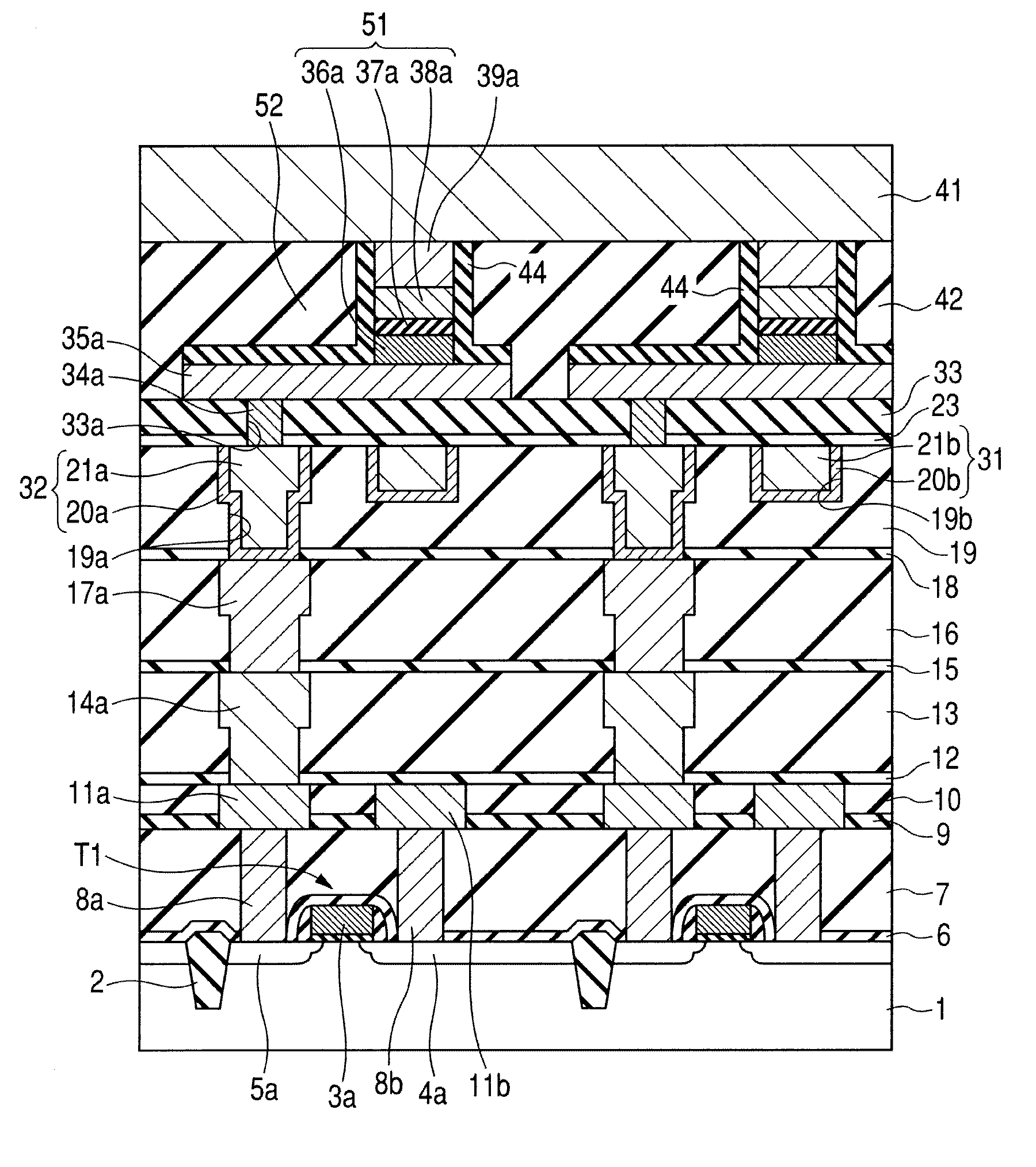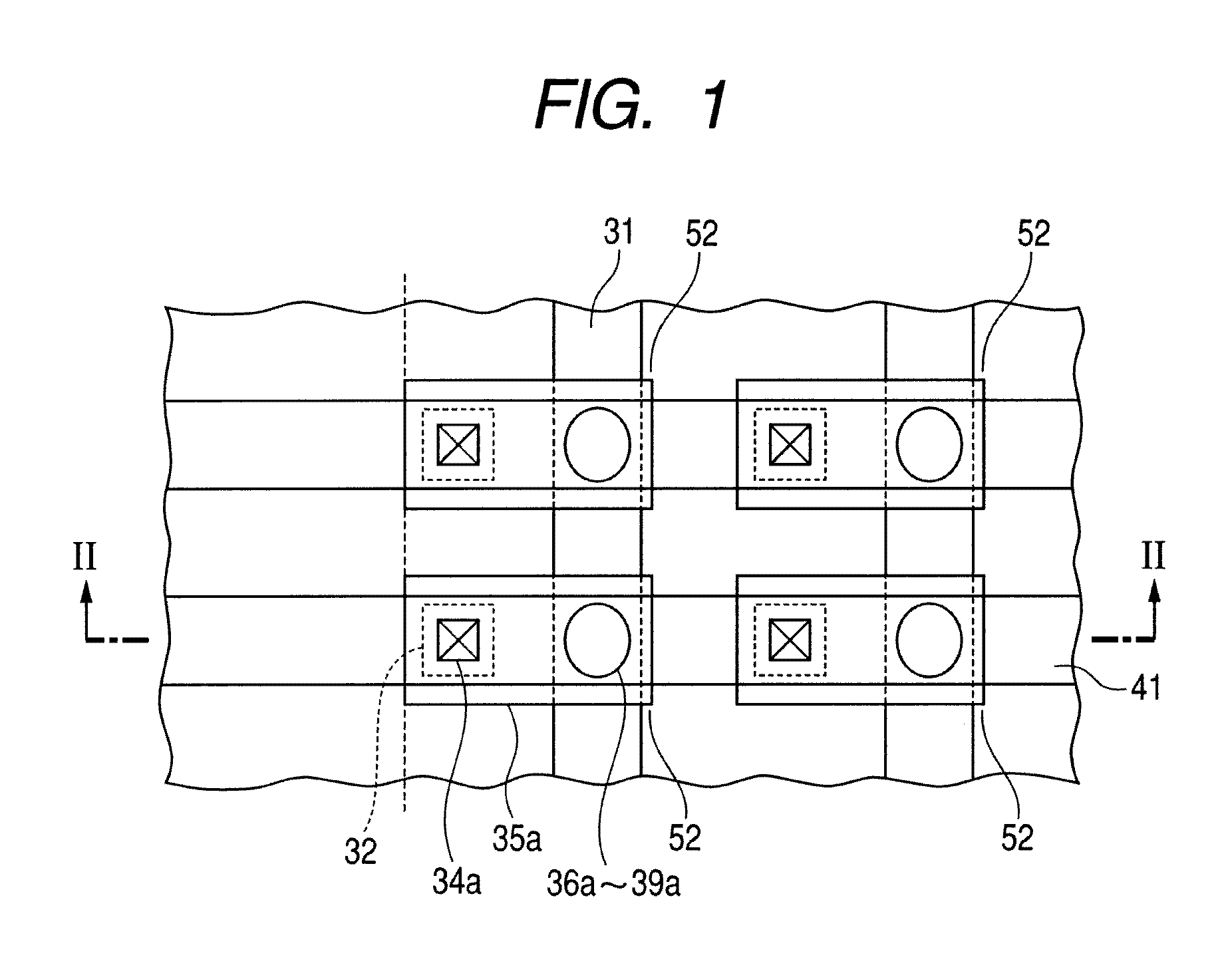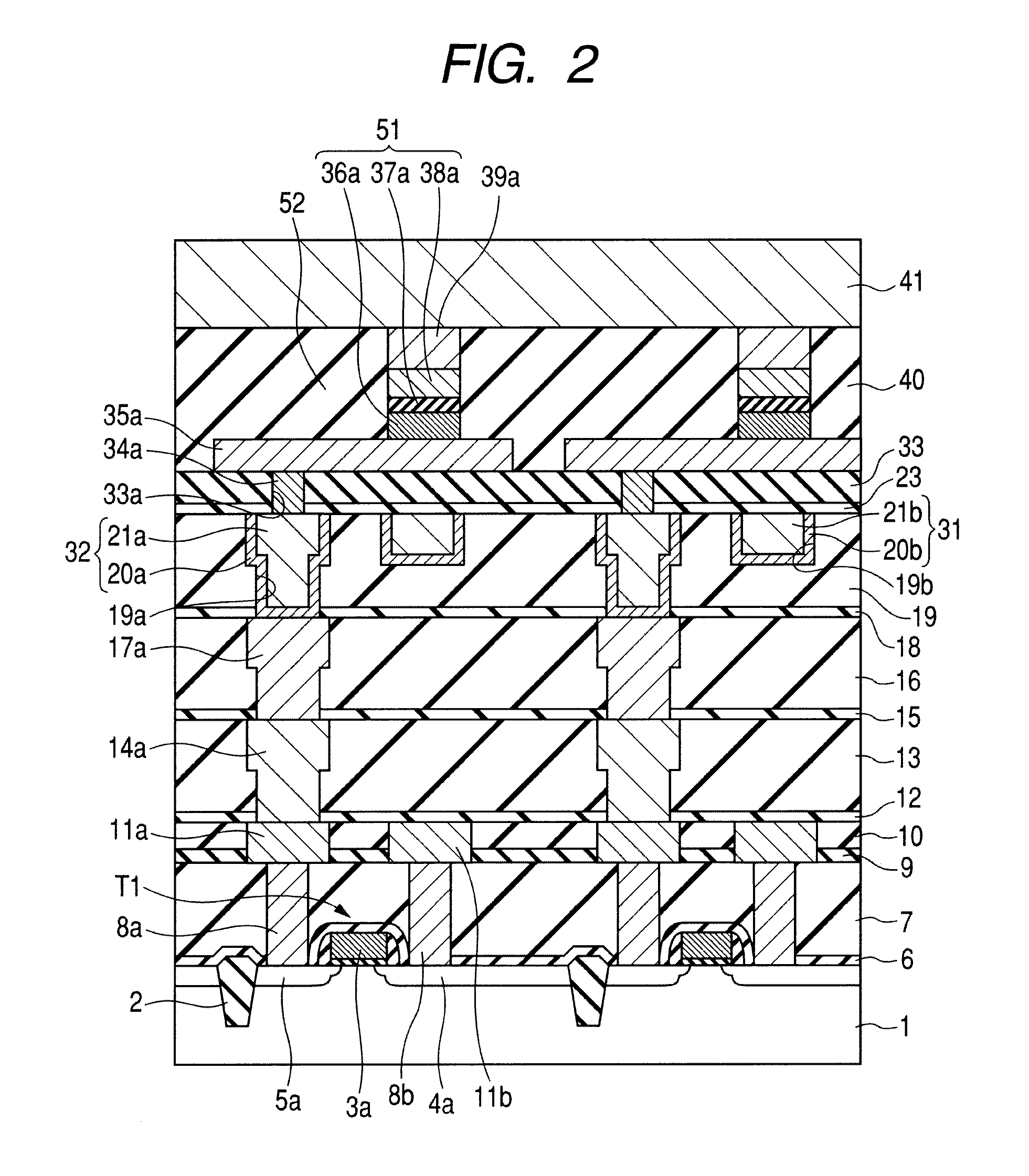Semiconductor device and method of manufacturing the same
a technology of magnetic resistor and semiconductor, which is applied in the direction of magnetic field-controlled resistor, semiconductor device, electrical apparatus, etc., can solve the problems of short circuit failure of magnetic resistor elements, and achieve the effect of reducing short circuit failures
- Summary
- Abstract
- Description
- Claims
- Application Information
AI Technical Summary
Benefits of technology
Problems solved by technology
Method used
Image
Examples
embodiment 1
[0065]First, a description will be given to a structure of a memory cell region in a semiconductor device. As shown in FIG. 1, in a memory cell region M, a plurality of digit lines 31 are formed in mutually spaced-apart relation to extend in a direction, and a plurality of bit lines 41 are formed in mutually spaced-apart relation to extend in a direction substantially orthogonal to the direction. At the portions where the digit lines 31 and the bit lines 41 cross each other, magnetic resistor elements 51 are disposed. One ends of the magnetic resistor elements are coupled to the bit lines 41, while the other ends thereof are coupled to the drain regions of element selection transistors (not shown).
[0066]As shown in FIG. 2, each of the element selection transistors T1 has a gate electrode 3a, a source region 4a, and a drain region 5a, and is formed in a surface of an element formation region defined in a semiconductor substrate 1 by an isolation insulating film 2. An etching stopper ...
embodiment 2
[0123]Here, a description will be given to a technique in which the surface of the portion of the interlayer insulating film located in the memory cell region is set by etching at a position lower than that of the surface of the portion of the interlayer insulating film located in the peripheral region.
[0124]In the steps shown in FIG. 4 described above, the etching stopper film 23 is formed so as to cover the interlayer insulating film 19, and the interlayer insulating film 33 is formed over the etching stopper film 23. Then, as shown in FIG. 30, a resist pattern 71 is formed so as to expose the portion of the interlayer insulating film 33 located in the memory cell region M and cover the portion thereof located in the peripheral region P. Using the resist pattern 71 as a mask, the portion of the interlayer insulating film 33 located in the memory cell region M is etched to have the surface thereof set at a position lower than that of the surface of the portion of the interlayer ins...
PUM
 Login to View More
Login to View More Abstract
Description
Claims
Application Information
 Login to View More
Login to View More - R&D
- Intellectual Property
- Life Sciences
- Materials
- Tech Scout
- Unparalleled Data Quality
- Higher Quality Content
- 60% Fewer Hallucinations
Browse by: Latest US Patents, China's latest patents, Technical Efficacy Thesaurus, Application Domain, Technology Topic, Popular Technical Reports.
© 2025 PatSnap. All rights reserved.Legal|Privacy policy|Modern Slavery Act Transparency Statement|Sitemap|About US| Contact US: help@patsnap.com



